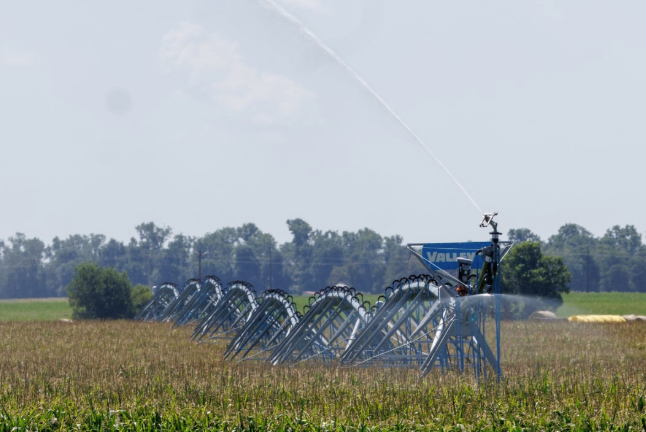
At current rates, certain areas of the Ogallala aquifer are expected to dry up within the next 30 years.
It's a huge dilemma for producers who rely on the aquifer, a body of underground sand and gravel porous enough to transport and store groundwater.
But it's a problem that Oklahoma State University, along with Kansas State University, Texas Tech University, California State University and NASA, are trying to solve. Through grants from the Sustainable Agricultural Systems (SatRAP) program of the USDA Agriculture & Food Research Initiative[SL1] A transdisciplinary, five-year project began this year with the aim of developing water-smart production systems.
“The ultimate goal is to preserve the Ogallala aquifer and similar aquifers in the region,” said Kevin Wagner, director of the Oklahoma Water Resources Center at OSU.
Wagner is joined on the project by OSU faculty colleagues Sumon Datta, Dayton Lambert, Lixia Lambert, Michael Long and Sumit Sharma.
More than two dozen researchers at the universities work together and are divided into three teams: education and outreach, socioeconomics and technology. Kansas State University is leading the project. OSU assesses groundwater policy and economic impacts, works to improve the use of new technologies in Oklahoma by developing new irrigation planning tools, and disseminating insights to producers and water managers through extension programs and regional outreach. [SL2]
OSU Extension's Master Irrigator program will be critical to this project.
“As part of the project, the existing conditions will first be evaluated,” said Wagner. “What are the existing policies and practices in each state, how have they changed and evolved over time, and what possible innovations can be implemented to help improve the aquifer?”
OSU will work with local producers to understand current perceptions of the aquifer's condition and policies governing its management. They will conduct surveys to determine how different conservation efforts are perceived and which ones are most likely to be implemented.
“These surveys will allow us to better understand the barriers to adoption, incentives required and perceptions of various policies,” Wagner said. “Also[SL3] As we receive feedback on new technologies, we can make the technology more usable and ensure it offers producers what they need most to help them.”
The main technology addressed is OpenET, a satellite-based water data resource used to track evapotranspiration, or water use, of crops. The development of OpenET was supported by NASA.
Sumon Datta, assistant professor of biosystems and agricultural engineering, is leading the OSU portion of the OpenET work on this project.
“OpenET offers several benefits to the SatRAP project by providing a transparent, standardized and scalable foundation for regional water management,” said Datta. “Its long-term, field-scale evapotranspiration data can be used to establish historical baselines and benchmarks for irrigation performance.”
Wagner looks forward to applying these historical foundations to future policy guidance. OpenET's data will allow OSU to assess whether policy changes and various programs implemented over the years have been effective.
Wagner gives the example of well measurement. In Kansas, growers are required to measure their wells. Texas has groundwater protection districts with varying degrees of regulation. But Oklahoma has limited regulations for users.
With OpenET data allowing researchers to examine data from the 1980s to the present, Wagner's team will be able to determine whether groundwater management measures implemented over the years have been effective.
“Data comparing the effectiveness of different policies in these states will help inform decision-makers about the best approaches moving forward,” Wagner said.
The OpenET data will also benefit producers and enable smarter irrigation practices that require less water use in the future, according to Datta.
“We can directly observe evapotranspiration at the field scale and get an estimate of water available to plants in the root zone,” Datta said. “We can use this information to dynamically adjust irrigation needs and detect spatial variations in water stress within the field.”
Stabilizing the aquifer is a top priority for the OSU research team. Reports indicate that droughts and heat stress will increase across the region over the next 50 years. Wagner points out that some areas are less than 30 years old. Others have more than 200 years. The universities are working to apply “Q-stable analysis,” a sustainable water use calculation that determines what pumping rates would be needed to offset declines and extend the life of the aquifer.
“The focus is on what reductions would be needed to substantially offset the declines,” Wagner said. “There is currently a downward trend in water levels. Can we flatten this trend? What would it take and what economic impact would that have on farmers and the region?”
The ultimate goal of the project is sustainability.
“We hope to achieve sustainable water use in the Ogallala,” Wagner said. “But what we’re about to do will have far-reaching impacts throughout the United States and potentially the world.”